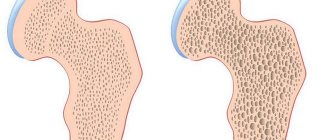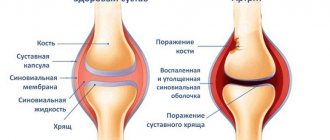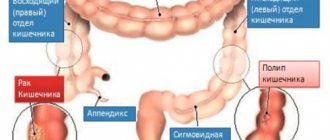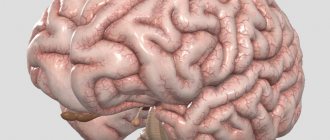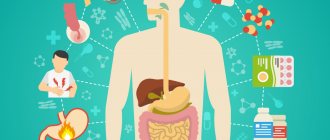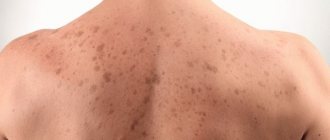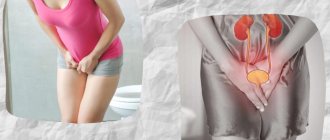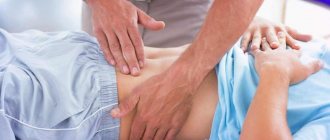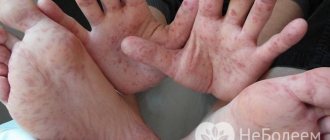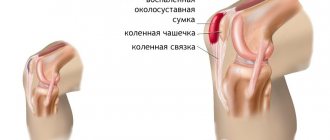Gout is a rheumatic disease caused by the accumulation of crystallized uric acid salts in the joints and kidney structures. Its leading clinical manifestations are recurrent, progressive attacks of arthritis, accompanied by intense pain and the formation of specific nodules - tophi, provoking deformation of the joints. After some time, the kidneys become involved in the pathology process, which causes the development of urolithiasis and renal failure.
To diagnose gout, a number of instrumental studies are performed: radiography, MRI, CT, and, if necessary, arthroscopy. The most informative is a biochemical analysis of synovial fluid for the presence of urates. The main goals of therapy are to relieve inflammatory processes in the joints and prevent the progression of pathology by reducing the level of uric acid in the body. For this purpose, pharmacological drugs are used and the patient’s diet is adjusted.
What is gout
This disease occurs against the background of hyperuricemia - a pathological increase in the concentration of uric acid in the body. Urate crystals accumulate in joints and other organs. They have an irritating effect on surrounding tissues and provoke the development of chronic inflammation, which results in their proliferation and the appearance of gouty bumps. Tophi usually appear on the fingers, feet, knees, and less commonly on the elbows and forearms. Also, characteristic nodules often appear in other places - on the edge of the outer ear, and sometimes in the tissues of the spine, heart, lungs and other internal organs. The tophi themselves are painless. However, in acute gout, patients feel pain due to inflammation of surrounding tissues, such as tendons or periarticular bursae.
What to do during an exacerbation of gout
Gout is a disease that must be treated as soon as the first symptoms appear. The exacerbation of the disease is extremely severe, preventing the patient from leading a normal life. To relieve painful symptoms and remove such an unpleasant phenomenon, you must do the following:
- Immobilize the inflamed joint by fixing it in an elevated state using an elastic bandage or a special bandage.
- Frequent use of aspirin is prohibited, as it causes an abrupt change in the amount of uric acid.
- Patients with gout who experience an increase in its symptoms need to constantly measure the concentration of uric acid. At the slightest deviation from the norm, you must immediately start taking medications.
- Exercising should become a daily habit. The most acceptable types of physical exercise are running, swimming, cycling, dancing.
- Drinking the daily norm of plain water, which activates the work of the kidneys to eliminate waste by-products. Its required amount is at least two liters per day.
- Taking vitamin complexes. To determine which vitamins are missing in the body, the patient needs to do a detailed blood and urine test.
- Patients with gout are strictly prohibited from drinking carbonated and alcoholic drinks. The ban applies to the consumption of powdered juices.
- Changing the diet, which should include vegetables and fruits, cereals. Store-bought sausages and food products with a high content of animal proteins should be consumed rarely, in small quantities.
Causes of the disease
The key factor in the development of gout is pathological conditions that lead to increased levels of uric acid in the blood. Approximately 10% of cases of the disease are caused by a hereditary predisposition to disruption of the natural metabolism of purines, which are the source of urate synthesis. This type of gout is called idiopathic. The remaining 90% of cases of the disease are associated with impaired excretion of uric acid due to various reasons. This may be excess production of a substance that the body does not have time to get rid of. Also, the accumulation of large amounts of uric acid may be associated with impaired kidney function.
The risk group for this disease includes people with hypertension, various kidney diseases, hyperlipidemia, obesity, diabetes mellitus and pathologies of mineral metabolism. However, an increased concentration of uric acid in the body is not the only thing that causes gout. The appearance of this disease is usually preceded by a combination of hyperuricemia and factors that provoke the inflammatory process, for example:
- abuse of alcoholic beverages, especially beer;
- eating large amounts of red meat and fish;
- overload and joint injuries from intense walking or impacts;
- long-term use of diuretics and some other medications;
- sedentary lifestyle, high age (55 and older) and others.
Medicines
Photo: nanovrachi.ru
The most common representative of uricodepressive drugs is allopurinol. This drug reduces the synthesis of uric acid due to its mechanism of action. Reduces the content of urates in the blood serum and also prevents their deposition in tissues. While taking the drug, the following undesirable reactions may develop: nausea, vomiting, abdominal pain, diarrhea, taste perversion, loss of taste, jaundice, myalgia, arthralgia, headache, paresthesia, blurred vision, peripheral edema. If these side effects occur, you should immediately inform your doctor.
The group of uricosuric drugs includes the following drugs:
- etamide – promotes the excretion of uric acid in the urine, thereby reducing its content in the blood serum. While taking the drug, dyspeptic and dysuric disorders may occur, which, as a rule, go away on their own;
- probenecid - increases the excretion of uric acid. While taking the drug, the following side effects may occur: nausea, vomiting, pain in the gums, headache, dizziness, frequent urination.
To relieve an attack of acute gouty arthritis, colchicine is prescribed, which has not only an anti-gout effect, but also an analgesic effect. While taking the drug, the following side effects may develop: nausea, vomiting, diarrhea, temporary alopecia, peripheral neuritis, myopathy. If a clinical picture of drug poisoning develops, you should immediately contact a medical facility, since this condition requires emergency assistance from specialists. In this regard, it is strongly recommended to follow the doctor’s recommendations and in no case independently adjust the frequency of taking the drug and its dose.
Nonsteroidal anti-inflammatory drugs (NSAIDs) inhibit the enzyme COX (cyclooxygenase), resulting in the disruption of the synthesis of prostaglandins from arachidonic acid. Thanks to this mechanism of action, the following effects are achieved: antipyretic, anti-inflammatory and analgesic. The following NSAIDs can be used in the treatment of gout: ibuprofen, aceclofenac, diclofenac, nimesulide, meloxicam. People with diseases of the gastrointestinal tract should be careful when taking these drugs, since long-term use of non-steroidal anti-inflammatory drugs, especially in large doses, leads to damage to the mucous membrane of the digestive tract.
Classification of the disease
Gout is divided into various subtypes, taking into account the cause of occurrence and the nature of the course. It can be primary, that is, caused by genetic factors, or secondary, arising as a result of certain diseases or external causes that provoked a violation of the excretion of uric acid.
In 80% of cases, gout has classic manifestations. At the same time, in practice, atypical forms of the disease are often encountered: pseudophlegmonous, asthenic, rheumatoid-like, periarthritic and other types.
According to the prevalence, gouty arthritis is divided into two types:
- Monoarticular - the lesion affects only one joint. This type is typical for middle-aged patients when the disease is first diagnosed. In approximately 60% of cases, the gouty nodule is localized at the joint of the big toe. Less commonly, tophi and other symptoms of the disease appear on the knees or ankles.
- Polyarticular - the lesion spreads to two or more joints. Usually occurs in older people or with a chronic course of the disease. During the initial manifestation of the disease, several joints become inflamed at once only in 10–20% of cases. The polyarticular form affects the feet, hands, wrists, elbows and ankles.
Effective treatment
In cases of self-medication, there is a risk of developing a chronic form of the disease.
Without adequate and timely treatment, gouty arthritis progresses and the chronic form of the disease begins. Once gout has developed, it cannot be completely cured. The patient should seek medical help to monitor the progress of the disease, and therefore prevent gout from affecting other joints. Therapy comes down to diet and the use of medications. The main treatment methods that doctors can prescribe are given in the table.
| Methods | Measures |
| Diet | Limiting pickled and smoked foods |
| Exclusion from the diet of fatty meat, fish, and foods containing oxalic acid | |
| Taboo on drinking alcohol and carbonated drinks | |
| Increasing the diet of fermented milk products and vegetables | |
| Moderate salt intake | |
| Compliance with drinking regime | |
| Nature of nutrition - frequent fractional | |
| Drug treatment | Hypoxanthine analogues |
| Selective xanthine oxidase inhibitors | |
| Pharmaceuticals that interfere with the absorption of uric acid in the renal tubules | |
| Medicines based on colchicine | |
| Glucocorticoids | |
| NSAIDs | |
| Physiotherapy | Magnetotherapy |
| Laser therapy | |
| Electrophoresis | |
| EHF therapy | |
| Moderate physical activity - walking, cycling, swimming |
If there is a family history of gouty arthritis, it is necessary to systematically monitor the level of uric acid in the bloodstream. Maintaining a normal weight is important, since gout is associated with overeating. A balanced diet and limiting foods containing purine substances will be a good prevention of the disease.
Stages of development of gout
Gouty arthritis is a sluggish disease that inevitably progresses in the absence of proper treatment and periodically worsens. The natural development of the disease has 4 stages:
- Asymptomatic hyperuricemia. At this stage, a person does not have any external manifestations of the development of gout. However, there is an increased level of uric acid in the blood. There is no specific treatment for gout at this stage. After all, up to 30 years can pass from the first case of increased uric acid to the development of the disease. In addition, hyperuricemia does not always lead to gout.
- Acute gouty arthritis. At this stage, the accumulation of uric acid crystals in the joints becomes critical. The result is swelling and severe pain. Severe intoxication of the body and the appearance of febrile fever may also occur. An acute attack of gout usually occurs at night after exposure to trigger factors and can last for several weeks.
- Intercritical period. At this stage, the disease develops asymptomatically. The joint has normal mobility, the person is not bothered by pain or other unpleasant sensations. At the same time, uric acid salts continue to accumulate in tissues. The next gout flare-up may occur several months or even years later. However, it can be avoided altogether by controlling uric acid levels in the body through diet or medication.
- Chronic gouty arthritis. This stage occurs in the absence of adequate treatment and control of uric acid levels in the previous stages. The disease progresses, affecting an increasing number of joints, as well as the bladder, kidneys and other internal organs. Tophi grow, which can result in ruptures of cartilage and ligaments, severe deformation of bones, and even complete destruction of joints.
Completing a course of treatment and following the doctor’s recommendations during the intercritical period can reduce cases of exacerbation or completely eliminate them. Otherwise, gout will be accompanied by multiple attacks, alternating at short intervals and accompanied by severe pain.
Clinical picture
Attacks of gouty arthritis are characterized by sharp, piercing, “gnawing” pain, the intensity of which may not decrease for several days. The pain syndrome occurs suddenly, accompanied by stiffness of movement and swelling of the joints. The inflammatory process involves nearby soft tissues, resulting in redness of the skin. It smooths out and becomes hot to the touch. On palpation, the intensity of the pain increases, and it radiates to healthy areas of the body. The soft tissues around the source of inflammation become denser and swell. Most often, the small joints of the big toes are the first to be affected by gout. Then inflammatory foci form in large joints:
- ankle;
- knee;
- elbows;
- hip
In the absence of medical intervention, uric acid crystals are deposited in the Achilles tendon and phalanges of the fingers. An increase in arthritis attacks leads to the formation of specific gouty nodules in the form of bumps on the joints, irreversible changes in the joints, expressed in their visible deformation. The range of movements is significantly reduced, the patient gradually loses professional skills and the ability to care for himself at home.
Problems arise in the functioning of the cardiovascular system. During the day, blood pressure may increase several times, vascular spasms and heart failure may occur. Although some cases of hyperuricemia are asymptomatic, the risk of heart or blood vessel problems is not reduced. The most dangerous consequences of lack of treatment are cardiac arrest or stroke. 20% of patients with gout develop kidney stones, and almost all of them develop chronic renal failure. Stones formed from uric acid crystals provoke severe pain in the joints and often clog the ureters.
| Forms of gout | Clinical manifestations |
| Attack of acute arthritis | The first pain occurs suddenly, usually at night. Arthritic gout is provoked by drinking alcohol or fatty, fried foods, trauma, and hypothermia. The pain syndrome is severe and localized in the metatarsophalangeal joint of the first toe |
| Polyarthritis of infectious-allergic type | There are wandering pains in many joints. The joint swells, turns red, and becomes hot to the touch. Signs of damage to the first metatarsophalangeal joint are moderate. Young patients have a high probability of developing oligo- or monoarthritis of the knee, ankle, and hip joints |
| Rheumatoid-like form | Primary involvement of the joints of the hands is noted, manifesting itself in the form of oligo- or monoarthritis |
| Periarthritic form | Inflammation affects the tendons and bursae, usually the ankles. Articular tissues are deformed, the edges of bone plates grow, incomplete dislocations become more frequent, and a crunching sound occurs when moving. |
| Pseudophlegmonous form | It manifests itself as monoarthritis with localization of the inflammatory process in the joints and paraarticular tissues. Often this form of gout is accompanied by a fever. |
Symptoms of the disease
At the initial stage of development, gout is diagnosed very rarely, since the patient does not have pronounced manifestations of the disease and, accordingly, there is no reason to see a doctor. The only sign that may indicate the likelihood of developing the disease is renal colic, a symptom of urolithiasis that often precedes gouty arthritis.
Symptoms of the disease appear during the exacerbation period:
- severe swelling of the affected joint;
- hot, shiny red skin over the area of inflammation;
- moderate local pain with intensification in the evening and morning;
- limited joint mobility;
- deterioration in general health (fever, loss of appetite, weakness, etc.).
If left untreated, the acute phase resolves on its own within a few days or weeks. In this case, the disease becomes chronic, in which severe symptoms weaken and hard nodes form in the joints.
First signs
The main clinical sign of the disease is an attack of gouty arthritis, which in 70% of cases develops in the area of the big toe, ankle or knee joints and is characterized by:
- the appearance of growths (tophi) in the joint area;
- pressing, bursting pain, which most often appears at night and in the morning, subsiding during the day;
- swelling and hyperemia in the area of the affected joint;
- increased heart rate;
- chills;
- increased sweating;
- increase in body temperature to 39 degrees;
- exacerbation lasts 2-7 days.
Signs of chronic gout:
- joint deformation;
- crunching in the affected joint;
- intense, prolonged joint pain;
- difficulty moving;
- cystitis;
- urolithiasis disease.
Preventive actions
Prevention of gout involves optimizing lifestyle. The most important thing: ensure proper nutrition. Frequent overeating and eating foods high in purines is a sure way to gout. Nutrition should always be balanced. If gout attacks have been observed among close relatives, then you should take your own nutrition very seriously. You should not allow yourself to become overweight.
Alcoholic drinks and smoking significantly reduce the excretion of uric acid from the body. Getting rid of bad habits is considered an important preventive condition. You should reduce your consumption of strong tea and coffee.
A mandatory preventative requirement is an active lifestyle. Gout most often affects small joints. In order to reduce the likelihood of this phenomenon, the mobility of such joints should be increased. An effective preventative measure is daily gymnastic exercises. You just need to be outdoors more often and take walks.
Gout is a painful pathology that causes serious complications.
A proper lifestyle helps to avoid such a disease. If it does appear, then it is necessary to start treatment in a timely manner, and strictly as prescribed by the doctor. It’s not for nothing that the disease is called aristocratic: optimizing nutrition significantly reduces the risk of the disease, even when there are hereditary preconditions.
Complications
The most common complications of the disease develop:
- gouty arthritis (damage to joints of inflammatory etiology);
- formation of gouty nodes;
- urolithiasis disease.
Gouty arthritis results from the body's immune response recognizing crystalline deposits as a foreign object. Inflammation develops as a result of the migration of a large number of leukocytes to the pathological focus.
Urolithiasis is another of the most serious complications of gout. Its outcome is often kidney failure, which in turn can cause death.
What diseases can be mistaken for gout?
What other diseases follow a scenario similar to gout? This information will be especially useful for those who are accustomed to diagnosing themselves using reference books or information from the Internet.
- septic (purulent) arthritis . This condition may be preceded by some kind of skin or “general” infection, trauma or microtrauma of the soft tissues around the joint. Septic arthritis is almost always accompanied by an increase in body temperature. The diagnosis is clarified using the same joint puncture, and the doctor will make a preliminary conclusion about the diagnosis based on the appearance of the resulting fluid.
- pyrophosphate arthropathy (discussed below);
- reactive arthritis . This disease is a response to the presence of any pathogen in the body, and is treated, accordingly, jointly by a rheumatologist and an infectious disease specialist.
- rheumatoid arthritis is a chronic autoimmune disease of unknown origin that primarily affects women, unlike gout;
- osteoarthritis (often combined with gout);
- psoriatic arthritis (inflammation of the joints in combination with a skin disease - psoriasis).
Atypical forms of manifestation of pathology
Gout is a disease that is very dangerous due to its atypical clinical forms. The following variants of the development of articular pathology are particularly highlighted:
- Rheumatoid form with a prolonged gouty attack and the main localization in the carpal and middle joints.
- Pseudophlegmonous form with damage to medium and large joints in the form of arthritis with obvious symptoms: swelling, hyperemia, fever, changes in blood tests.
- Polyarthritis of a rheumatic or allergic nature.
- Periarthrial form with damage to tendons and bursae. The duration of the attack can range from 3 to 40 days.
